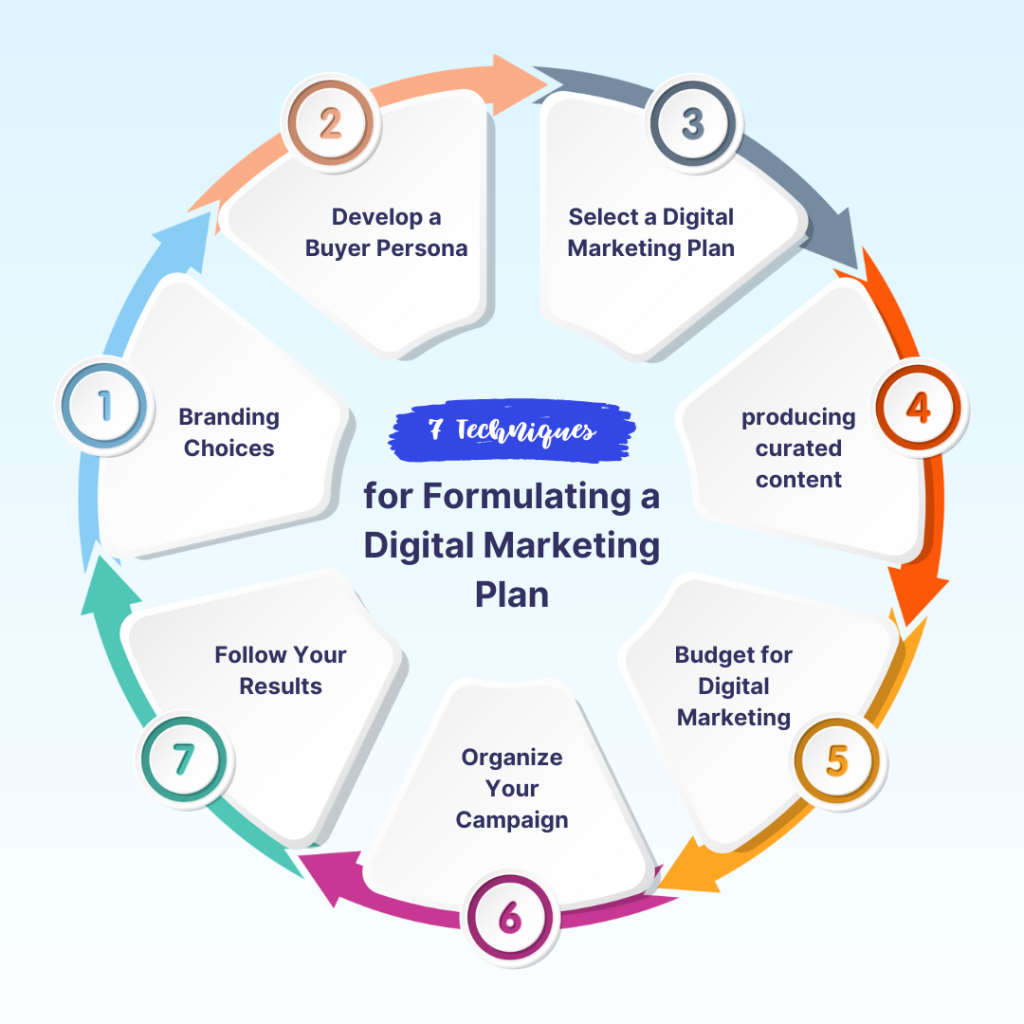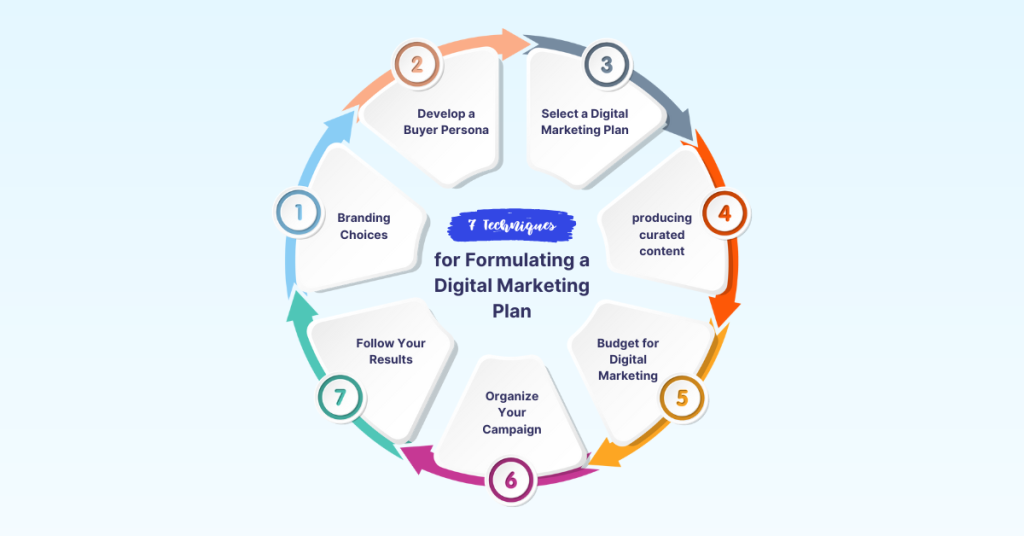Creating a successful digital presence requires more than just having a website or social media account. A well-structured digital marketing plan can be the difference between online growth and digital silence. Whether you’re a startup owner, an e-commerce entrepreneur, or a marketer aiming to scale results, having a focused strategy is crucial.
In this article, we’ll explore seven essential steps to build a strong and effective online marketing strategy that aligns with your brand goals, customer needs, and market trends in 2025
1. Define Your Branding Strategy
Before diving into channels or content, you must develop a clear branding strategy. Branding goes far beyond just a logo. It defines the identity of your business, the emotions it creates, and the way it communicates with the audience.
Start by deciding:
- Your brand tone (formal, friendly, bold, etc.)
- Colors and fonts
- Core brand message or slogan
- Mission and values
Consistency across all platforms increases recognition and trust. When your audience sees a familiar design, tone, and message wherever they encounter your business, it reinforces your professionalism.
2. Create a Buyer Persona
A successful digital marketing strategy begins with understanding who you are marketing to. A buyer persona is a semi-fictional representation of your ideal customer based on real data and market research.
To create a buyer persona:
- Analyze your existing customer base
- Conduct surveys or interviews
- Use data tools like Google Analytics or Facebook Insights
- Define customer goals, challenges, behavior, and interests
Once you know who your audience is, you can speak directly to their needs and tailor your messaging to match their preferences.
3. Set Clear Marketing Goals
Every effective online marketing plan starts with specific, measurable goals. These should align with your broader business objectives. Examples of digital marketing goals include:
- Increasing website traffic by 30% in 3 months
- Generating 200 new leads through email sign-ups
- Improving conversion rate from paid ads by 20%
Use the SMART framework: Specific, Measurable, Achievable, Relevant, and Time-bound. This ensures your plan is focused and trackable.
4. Choose the Right Marketing Channels
There are dozens of platforms and strategies available, but not all of them suit your brand. Choosing the right channels depends on your goals and buyer persona.
Here are some options to consider:
- Search Engine Optimization (SEO): Ideal for long-term organic growth.
- Content Marketing: Blogs, videos, and case studies to educate and attract.
- Social Media Marketing: Facebook, Instagram, TikTok, or LinkedIn depending on your target audience.
- Email Marketing: For nurturing leads and driving repeat customers.
- Pay-Per-Click Advertising (PPC): Quick visibility through platforms like Google Ads or Meta Ads.
Avoid spreading yourself too thin. Focus on 2–3 core channels and build your presence strategical
5. Develop a Content Strategy
Content is still king in the digital world. It helps educate your audience, build trust, and drive conversions. Your content strategy should support every stage of the buyer’s journey — awareness, consideration, and decision.
Types of content to consider:
- Blog posts that answer common questions
- Short-form videos or reels that engage users
- Infographics for data-driven topics
- Email newsletters with value-packed updates
- Case studies and client testimonials
Make sure your content aligns with your branding and speaks directly to the problems your audience is facing.
6. Plan Your Budget Effectively
Every digital marketing plan needs a defined budget. This helps you allocate resources wisely and prevents overspending on low-impact strategies.
Break down your budget across:
- Paid advertising
- Content creation (writers, designers, video editors)
- Tools and platforms (email marketing software, analytics, automation tools)
- Training or consulting if needed
Monitor ROI (Return on Investment) across different campaigns and reallocate funds to what’s working best.
7. Track Results and Optimize Campaigns
One of the most valuable aspects of digital marketing is the ability to track results in real-time. Tools like Google Analytics, Meta Ads Manager, and email platforms offer insights into user behavior, ad performance, and conversion rates.
Important metrics to track include:
- Website traffic and bounce rate
- Email open and click-through rates
- Cost per lead and conversion rate
- Social engagement (likes, shares, comments)
Data lets you optimize your efforts. If one ad isn’t performing, tweak it. If a content format gets high engagement, produce more of it. Use insights to continuously improve your strategy.

Bonus Tips for a Stronger Strategy
✅ Automate Where Possible: Use automation tools like Buffer, Mailchimp, or Zapier to save time on repetitive tasks.
✅ Focus on Mobile Users: Ensure your website and content are mobile-friendly since most users browse on smartphones.
✅ Test and Learn: Run A/B tests on subject lines, ad creatives, or landing pages to find what works best.
✅ Stay Updated: The digital world evolves fast. Follow industry blogs, attend webinars, and test new trends like voice search or AI-driven marketing.
Conclusion
A powerful digital marketing plan is more than a checklist — it’s a roadmap to consistent growth. By following these seven steps — from defining your brand and buyer persona to budgeting and performance tracking — you lay a strong foundation for success.
The key is to stay focused, measure everything, and never stop optimizing. In a rapidly changing online world, those who adapt, test, and improve will always stay ahead.
Whether you’re launching a new campaign or revising an old one, these strategies will help you create a plan that is both smart and sustainable in 2025.

